The automotive supply chain is facing many hurdles this year, as set out in our key automotive logistics trends for 2025. Here, we look deeper at the fragmented nature of the industry, structural changes in flows and demand, and the effects of job losses in the second part of our series.

The global automotive industry is navigating a period of profound transformation, with modest sales growth in some regions overshadowed by structural shifts in key markets and growing market turbulence. While light vehicle sales edged up globally in 2024, regional disparities and persistent challenges highlight a complex landscape. Europe’s market remains stagnant, North America continues to grapple with lower post-Covid volumes, and China has emerged as both a dominant exporter and a competitive disruptor. These dynamics are compounded by job cuts, plant closures, and rising competition from Chinese EV manufacturers, creating ripple effects throughout the industry.
While we have seen these trends growing in recent years, such as the further fragmentation of the industry and increasing cost pressures, over time the effects are compounding, and for logistics providers, the implications are significant. Inbound supply chains in Europe are shrinking, export flows are being displaced, and the rise of OEMs like BYD, which control their own logistics assets, is eroding market share for traditional players. In North America, shifting trade patterns and inventory surpluses are driving changes in vehicle flows. As structural changes reshape the industry, the uncertainty is curbing investments in fleet capacity and infrastructure, while opening the door to potential mergers and acquisitions as companies seek stability in a volatile environment.
Globally, there was modest growth in 2024 in light vehicle sales, up 1.7% year on year. In the US, light vehicle sales increased 2.1% year on year, while in China, light vehicles sales were up 4.5%, although even this bright spot is in the context of drastically slowing growth compared to 2023 when growth was +12% year on year. European light vehicle sales (for the first 11 months in 2024) were relatively flat at +0.4% year on year, albeit with variation by country, with growth in Spain (+5.1%), and the (UK +2.6%), but declines in France (-3.7%), Germany (-0.4%), and Italy (-0.2%). Full year 2024 results are yet to be announced but are unlikely to move the dial.
What appears to be becoming apparent is that the Covid period, and the disruption that ensued, masked and delayed more long-term structural changes which were occurring in the industry. These changes are only now playing out.
For example, the US’ sales volumes for 2024 are still around 1 million units (1m) short of pre-Covid levels, and Europe’s market has stagnated with volumes still 3m or so below pre-Covid levels.
In fact, VW’s CEO Oliver Blume has referenced this structural change in European sales as justification for closing VW plants due to overcapacity. Consequently, there has been a raft of dramatic announcements by OEMs and tier suppliers, particularly in the latter half of 2024, not only to address this overcapacity and anticipate future competition from cheaper Chinese EVs. High (unionised) labour costs as well as high energy costs have also been a particular concern in Europe due to the shift away from cheap Russian gas supplies.
| OEM | Details | Date |
|---|---|---|
|
Ford |
Nov 2024 |
|
|
General Motors |
Nov 2024 |
|
|
Stellantis |
CEO Carlos Tavares resigns, Vauxhall’s Luton plant closure puts more than 1,100 jobs at risk |
Dec 2024 |
|
VW |
Dec 2024 |
|
|
Nissan / Honda / Mitsubishi |
Dec 2024 |
|
|
Tier suppliers |
Details |
Date |
|
Forvia |
Feb 2024 |
|
|
Magna |
Apr 2024 |
|
|
ZF |
Jul 2024 |
|
|
WKV (Walter Klein Group) |
Oct 2024 |
|
|
Bosch |
Nov 2024 |
|
|
Schaeffler |
Nov 2024 |
|
|
Michelin |
Nov 2024 |
|
|
Continental |
Dec 2024 |
Furthermore, even though overall global vehicle volumes are fairly stable, these job cuts and capacity reductions indicate that most of the western legacy OEMs are losing relative market share, compared to Tesla and BYD which are gaining market share.
Europe’s shift from vehicle exporter to importer disrupts logistics
Structural changes in volumes clearly impact logistics operators. For example, Europe’s inbound supply chains are significantly smaller than before the pandemic, and unlikely to recover to pre-Covid levels. Furthermore, after decades of being a net exporter, Europe has shifted to being a net importer of vehicles in the last few years. However, it is not simply a case of replacing FVL export flows with FVL import flows. For example, BYD now owns its own ro-ro vessels, resulting in incumbent FVL providers losing market share in Europe (albeit with much of BYD’s flow of EVs into Europe not selling and piling up at ports and compounds).
China emerges as the world’s leading vehicle exporter in 2025
Just a few years ago, China almost entirely fulfilled its domestic vehicle demand with domestic production, and it was a relatively closed market, with exports below 1 million units. However, in 2025, China has become the world’s leading vehicle exporter. It is important to note that the growth is nuanced, as China has largely filled the export gap left by western OEMs exiting from Russia. China also exports significantly to Mexico (taking advantage of their low tariffs to enter the USMCA region), plus South America, the rest of Asia, and Europe to some extent.
North America faces record inventory levels and shifting trade flows
Within North America, inventory reached record levels in 2024. GM has been importing more vehicles to the US from South Korea with which it has a free-trade agreement, and into Mexico from its Chinese joint ventures (JVs). VW union negotiations are also shifting some production out of Germany to plants in Mexico, including its plant in Puebla.
Adapting to change: logistics providers navigate new flows and uncertainty
We are seeing companies adapt to these structural changes and develop new flows, routes and sourcing locations, while adapting import and export services. There will also be opportunities as some OEMs outsource more areas, whilst in other cases they will use existing resources and assets.
Whilst there has been some logistics industry consolidation with DSV acquiring DB Schenker in late 2024, there has not been a major shift in mergers and acquisitions (M&A) activity, but this is likely to be an option for some logistics service providers (LSPs) as we continue into 2025. An M&A trend could indeed be accelerated if market conditions persist. The industry turmoil is certainly making even OEMs consider consolidating, for example the planned merger of Honda - Nissan.
It is often reported that for each OEM production line job, that is usually a job multiplier in the supply chain of up to 10 times, so any threat to these production line jobs would cause a great threat to automotive logistics. For example, automotive tier suppliers are also feeling the pressure of industry turmoil with German automotive supplier Webasto restructuring in response to market conditions. So, if there are significant job losses at factories or closures this will have a similar impact for logistics providers.
Look out for our final analysis column in this series which will explore the growing trend of cost-cutting in more detail…
We will discuss these trends and more in the upcoming Automotive Logistics’ livestream, ”Leading automotive logistics through 2025: Key turning points and trends”. Join the livestream on 5 February 2025 at 15.00 GMT/10.00 EST hear from industry thought leaders and gain actionable insights on overcoming today’s toughest automotive supply chain challenges.
Discover strategies to stay ahead of disruption and lead the way toward more profitable operations. The livestream will feature expert insights from Gerardo de la Torre Garcia, regional senior director, Supply Chain Management USA & MEX at Nissan Group of North America; Matthias Schmidt, European autos analyst at Schmidt Automotive Research; Daniel Harrison, automotive analyst at Ultima Media and more.
Designed for OEMs and tier-one suppliers, this session will equip you with the tools to proactively shape your supply chain strategies for 2025 and beyond.
Topics
- Analysis
- Battery Supply Chain
- Data Analysis & Forecasting
- Editor's pick
- Electric Vehicles
- EV & Battery Production
- features
- Flash analysis
- Infrastructure Logistics
- Kaizen & Continuous Improvement
- Lean Logistics
- Lean Transformation
- Logistics service provider
- Nearshoring
- News and Features
- OEMs
- Regional Distribution Networks
- Risk Management
- Shipping
- Suppliers
- Supply Chain Planning
Top trends for automotive logistics in 2025
- 1
- 2
- 3
 Currently reading
Currently readingGlobal automotive industry shifts intensify challenges for logistics providers
- 4
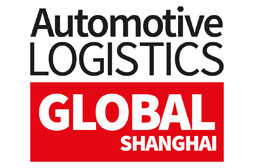





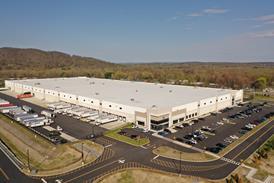

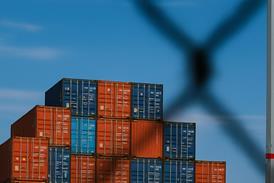


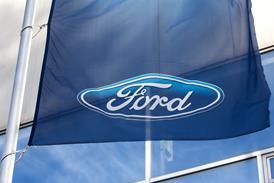


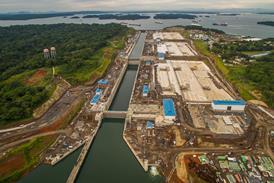



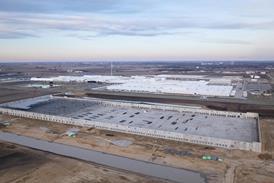
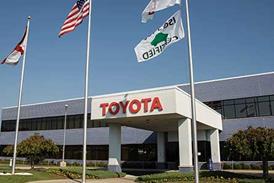









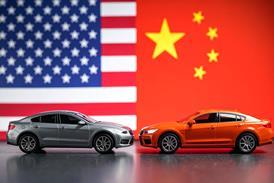


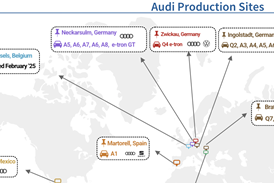












1 Reader's comment